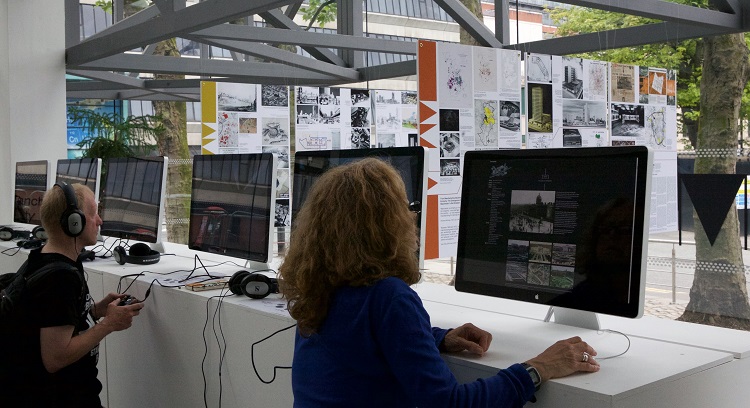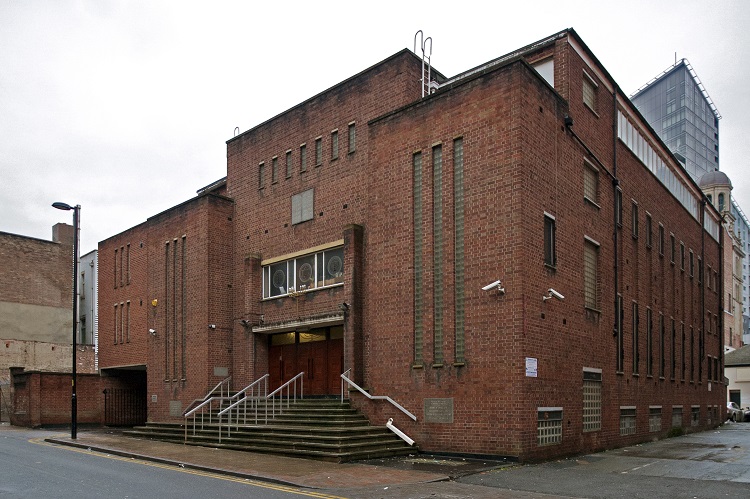Manchester’s landmark architecture could be forever preserved in virtual reality to allow people to revisit former buildings where they once stood.
Computer and architecture experts aim to create 3D virtual buildings that could one day exist on their former sites – letting people to ‘enter’, walk through rooms and even hear stories hidden in the walls through wearable devices.
Researchers at Manchester Metropolitan University, working with The Modernist Society and Archives+ at Manchester Central Reference Library, are looking to bring former buildings back to life using the latest technology as part of the new ‘Next Generation of Immersive Experiences’ project.
The team will investigate the range of digital reproduction methods currently available – including CAD software and laser scanning – to work out which might be most appropriate to produce virtual models of buildings that can also host oral testimony and other memories.
Synagogue pilot
The initial project will be a pilot of the virtual reproduction via conventional augmented reality on a mobile device of the Jackson’s Row synagogue in Manchester, who are in support of the project. Its cultural significance, and the fact that it was the first new building in the city after 1945, made it an obvious choice for the team.
Richard Brook, Principal Lecturer at Manchester School of Architecture, Manchester Metropolitan University and lead researcher, said: “This idea centres on the digital preservation of our cities. Cities change, and without development cities are petrified, stultified and can become thematised versions of themselves.
“Yet development is not without its sensitivities and often involves passionate protest about preservation of buildings and heritage. Last minute attempts to save buildings under threat of demolition through the statutory listing process often falter and a usual outcome is a clause in the planning approval that an archaeological record is made.

“This record may include a measured and photographic survey and cursory written reports of the cultural history of the site. Such records are hard to access and, in technological terms, are a limited means of representing lost artefacts.
“They also fail to represent the cultural value and personal memories to the people and communities that experienced the buildings.
“This project imagines the creation of a model that can recreate a rich and layered version of a building and bring it to life through the collation of social, cultural, technical and visual archival sources.”
Capture spirit of places
Jack Hale, from the Modernist Society, said: “Sometimes buildings are demolished and elements that have touched the lives of its inhabitants are lost - the furniture, the pictures, the decor and the memories of the people who worked, celebrated or worshipped there. With this project we hope not to carry out just a building survey, but to capture and incorporate part of the spirit and the life of some of the people who have passed through its rooms.”
University architects, historians, and computer scientists will work on ‘The Life of Buildings’, which has won funding from the Arts and Humanities Research Council/Engineering and Physical Sciences Research Council’s Research and Partnership Development call for the ‘Next Generation of Immersive Experiences’.
Future plans for other buildings will see this approach proceed to the development of mixed-reality experiences that can be geo-located, allowing people to visit demolished or redeveloped buildings in their original location using untethered wearable devices.
Such an advancement would also address problems in the planning and development system, creating a new form of accessible building survey that also brings existing records to life.
This project imagines the creation of a model that can recreate a rich and layered version of a building and bring it to life through the collation of social, cultural, technical and visual archival sources.
Brook is joined in the research by co-investigators Dr Kevin Tan, Senior Lecturer in the Department of Computing and Mathematics at Manchester Metropolitan and Dr Ben Edwards, Senior Lecturer in Archaeology and Heritage.
The collaboration builds on previous successes, including the ‘Making Post War Manchester’ exhibition in 2016, where visitors used games controllers to explore 3D models of a never realised 1960s regeneration of the city, developed from detailed maps, plans, sketches and archival sources.
Brook said: “A 3D virtual model could contain surviving architectural drawings of the buildings, digitised from archive sources – a viewer could walk at a scale of 1:1 through the architectural drawings, look at still images embedded within the model and listen to oral histories literally within its walls.
“A building that becomes more than the sum of its parts and has more to impart than it ever did when it was ‘alive’.”
The project scheduled to run until summer 2018 and will culminate in a public launch event at the Manchester Central Library.


